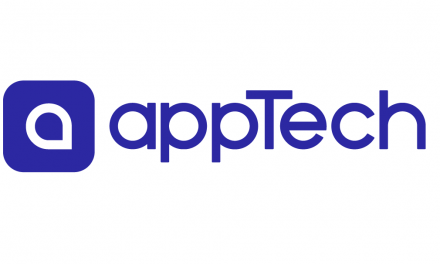A groundbreaking narrative echoes across the blockchain technology domain today, spotlighting the debut of Base – a novel Ethereum layer-2 network unveiled by the publicly traded U.S. crypto exchange, Coinbase. Could this landmark event mark the commencement of an unprecedented era? (See detailed coverage in Protocol Village below.)
Delving into the pages of our feature, penned by the insightful Sam Kessler, we dissect the tumultuous saga of the past fortnight – a saga involving the decentralized stablecoin exchange, Curve. Amidst the turmoil and near-calamity, we untangle the lingering hazards that the industry is yet to confront.
Network Insights
Introducing PAYPAL STABLECOIN: A revelation from PayPal, the peer-to-peer payment platform, introduces its proprietary stablecoin, PayPal USD (PYUSD). This innovative digital asset finds its backing in U.S. dollar deposits, short-term Treasuries, and cash equivalents. Rooted in the Ethereum blockchain using the ERC-20 token standard, PYUSD stands as a pioneering stablecoin birthed by a prominent traditional financial entity. Notably, the actual issuer of this stablecoin is Paxos, the entity behind the Pax dollar (USDP), which, despite its originality, struggled to secure a significant market share, unlike stalwarts such as Tether’s USDT and Circle’s USDC. Paxos, a former overseer of BUSD, the Binance-associated stablecoin, ceased its minting endeavors in February, complying with the directives of New York state regulators. Walter Hessert, the strategic luminary at Paxos Trust, assures that holders of the freshly minted PayPal stablecoin might find solace in the shelter of regulation, providing protection even in dire scenarios like Paxos facing insolvency. Amidst the digital discourse, X (formerly known as Twitter) reverberates with astute observations from blockchain detectives, meticulously dissecting the Ethereum smart-contract architecture underpinning the stablecoin. One thread scrutinizes the role of “assetProtection,” hinting at the possibility of a centralized entity wielding the power to reset balances. Another thread zeroes in on the usage of a five-year-old version of Solidity, the programming language integral to Ethereum’s smart contracts. Seizing the opportunity, opportunists swiftly embarked on schemes to defraud unsuspecting users by issuing counterfeit tokens, mimicking PayPal’s trading symbols. A palpable speculation looms – could PayPal’s bold foray catalyze legislative actions on stablecoin governance by U.S. lawmakers? Noteworthy columnist David Z. Morris opines that the true gem for PayPal could potentially be the allure of interest revenue, stemming from astute reinvestment of customer deposits.
Ripples in the Exchange Realm? Huobi, the crypto exchange overseen by Tron luminary Justin Sun, witnesses an unsettling decline in its stablecoin reserves – a plummet of $49 million within a week, roughly translating to a 33% reduction. Simultaneously, whispers from financial corners of Hong Kong depict several executives’ apprehension by Chinese law enforcement (a statement rebutted by a Huobi spokesperson). In a contrasting development, blockchain analytics unveil a substantial infusion into Huobi’s coffers – an influx exceeding $200 million by a significant investor, colloquially referred to as a crypto “whale.” These transactions, encompassing USDT and Ether, unequivocally defy any tether to Justin Sun. The whale’s address garners distinction as one of TRX token’s top-10 holders.
Unveiling Open-Source Friction. Matter Labs, the ingenious minds behind the Ethereum layer-2 network zkSync, stand accused by their rival, Polygon, of duplicating segments of their open-source code without duly acknowledging the source. Amidst the ensuing turmoil, Matter Labs admits to the code’s replication but ardently asserts that proper attribution indeed found its place. Notably, Matter Labs’ helmsman, CEO Alex Gluchowski, concedes room for improvement in the prominence of attributions. In a candid proclamation on X (formerly Twitter), Gluchowski avers the intention to adopt a more standardized approach to attributions moving forward. This tussle emerges as a didactic instance underscoring the communal norms steering the utilization of open-source software, emblematic of the high-stakes rivalry permeating this competitive landscape.
Intriguing Ventures Unveiled:
Worldcoin, the architect of the “proof-of-personhood” identity initiative flaunting its iris-scanning sphere, undergoes a dramatic episode as Kenyan law enforcement conducts a raid on its Nairobi warehouse, as local news outlets report.
LinksDAO, an online collective that seized ownership of a Scottish golf course for a princely sum of around $1 million earlier this year, extends a warm invitation to prospective new members.
Billionaire magnate of private equity, David Rubenstein, reflects on the resolute existence of bitcoin. He aptly highlights the persisting demand for a form of currency impervious to governmental reins. An undertone of remorse permeates as he rues his missed opportunity to acquire BTC at the humble price point of $100.
The Chronicle of Protocol Village:
The curtain rises on Base, the avant-garde Ethereum layer 2 blockchain meticulously erected atop the OP Stack by none other than the eminent U.S. crypto exchange, Coinbase. The grand premiere transpired on a Wednesday, heralding a new epoch in the crypto narrative. (For an exclusive tête-à-tête with the visionary Jesse Pollak, spearheading the protocols at Coinbase and orchestrating the grand debut, venture forth to our detailed interview, encapsulated in the unfolding pages.)
Within the community realm of Mantle Network, custodians of a thriving layer 2 network, a unanimous consensus materializes – birthing an economics committee entrusted with stewardship over the treasury, a bulwark boasting a staggering valuation of $4.2 billion.
Circle Internet Financial, the eminent proponent behind the USDC stablecoin, ushers in a trailblazing chapter. Their latest offering, a programmable web3 wallet platform, holds the promise of revolutionizing businesses’ capacity to extend digital asset payments to their esteemed clientele.
Enter the Scene: Safe, a beacon of institutional-grade multisig intelligence, seamlessly integrates with Moonpay, creating a bridge between the realm of fiat currencies and the ethereal domain of cryptocurrencies.
Alchemy Pay, a maestro in furnishing pathways for the amalgamation of fiat payments with cryptocurrency and Web3 services, embraces a pivotal transformation. The platform warmly embraces the USDD stablecoin into its Ramp platform, forging novel avenues of interplay.
Venture Chronicles:
Greetings arise from the realm of Hi, a crypto-centric payments application harmoniously entwined with an Ethereum sidechain. A robust infusion of $30 million unfurls as strategic investments, coupled with a symbiotic partnership with the illustrious metaverse gaming and venture capital giant, Animoca Brands.
In another corner of the crypto cosmos, Solv Protocol, hailing from Singapore, garners recognition for its on-chain fund protocol. A financial injection of $6 million breathes vitality into its veins, fostering the expansion of its team and the perpetual evolution of its technology. This technology unfurls avenues for organizations to sculpt, wield, and market an array of financial products.
Enveloped in Deals and Grants:
The Arbitrum community resonates with the resonance of governance, with two momentous proposals resonating. These propositions, collectively encompassing $5 million in ARB tokens, illuminate the path for grant initiatives. These endeavors are poised to invigorate and amplify the development landscape nestled within the realm of the layer-2 blockchain.
The Avalanche Foundation extends a pledge of profound significance – an assurance to procure $50 million worth of tokenized assets, woven into the very fabric of the network. This commitment casts a brilliant spotlight upon one of the most fervent trends that the crypto sphere has witnessed this year.
In the realm of NFTs, Yuga Labs takes center stage. The architect behind the illustrious Bored Ape Yacht Club NFTs sets the stage for a substantial acquisition. This endeavor is aimed at nurturing expansion, as Roar Studios, a Los Angeles-based entity, converges into Yuga Labs’ ever-expanding metaverse realm.
The Sway of Data and Tokens:
Intriguing maneuvers unfold in the realm of tokens. Paradigm Capital and Andreesen Horowitz, both venerable patrons of the decentralized stablecoin protocol MakerDAO, orchestrate a transfer of over $10 million in MKR tokens. This substantial movement triggers speculation, as the surge in price by a staggering 73% over a solitary month ushers whispers of potential investor divestment.
The Parrot Finance saga takes center stage within the Solana domain. Activist investors cast their gaze upon this DeFi protocol, propelling a repurchase of its PRT tokens. This tactical maneuver stems from a community decision to restore a slice of treasury, valued at a princely sum exceeding $70 million.
A metamorphosis unfolds in the fate of Kin (KIN) tokens. Following a communal consensus, trillions of these tokens face incineration. This strategic step arrives on the heels of Ted Livingston’s unveiling of Code – an innovation tightly interwoven with the essence of KIN.
DeFi’s Frosty Stint:
In the vast expanse of decentralized finance (DeFi) ecosystems, a chill reminiscent of crypto winter prevails, as scrutinized by the discerning eyes at Messari. The total value locked (TVL), a quintessential metric capturing the influx of collateral and deposits into blockchain protocols, is ensnared in a gradual descent. Ethereum, as the monumental nucleus of the DeFi sphere, bears witness to a 13% contraction in TVL, dwindling to a valuation of $23 billion across the past month. While Ethereum’s narrative treads a path of optimism, Solana enjoys a modest upswing.





